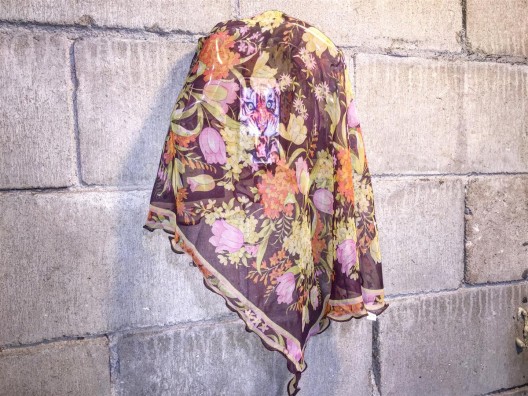Sleep Center (9 Monroe Street Basement, New York, NY 10002, USA), Feb 28–Mar 13, 2016
The familiar story of gallery-led gentrification in New York took a fetishistic turn with its latest expansion to Chinatown. Look no further than i-D’s romanticization of “garbage-laden streets” in a profile of the area’s new comers for your daily dose of hipster-doom. While most galleries and art spaces saw nothing more than cheap rent (and just about everything else) and a fusion oriental backdrop, the neighborhood has a way of interfering with what’s on show in the art spaces. Prototypes of joss-paper funerary offerings have been placed in pristine wall niches at James Cohen Gallery, where The Propeller Group’s vertiginous video of distinctly Vietnamese burial rituals is currently on view, in a funeral shop two storefronts down. Even for those sporadic initiatives that do intend to convene a critical commitment, the contrast between the place’s social and aesthetic density and the dearth of imagination in engaging with them is often astounding.
These annoyances set me up for a pleasant surprise at SLEEP CENTER, a project space founded by young artists Rui Lin and Kerim Zapsu at the southern edge of Chinatown (Monroe Street), ensconced among robustly local worship/community/ therapeutic centers. Its recent two-man show featured Hao Ni and Blake Hiltunen, and managed to congeal nicely the disparate sculptural practices of the two in their shared teasing of the sensual (if not the fetishistic) in disparate mediums. During the exhibition’s two-week run, Ni’s “Hickies”—a constellation of found images printed and transferred onto the wall—would remain fresh as Hiltunen’s wax-based “Double Self Portrait” underwent a grotesque metamorphosis induced by a hovering heat lamp. Sometimes one sensed a nod to Chinatown as an unlikely imaginary, which comes in a good range, too. Hiltunen’s readymade of a Styrofoam container lid delivers a deadpan and slightly sinister message: “Destroy Yourself.” Ni’s faux-rice sculptures—kneaded together with embroidered/patterned fabrics or forming a fabulous arch atop two bowls—assert an uncanny claim to monumentality. Another manifestation of this almost non-cynical sense of wonder is “Tiger”, also by Hao Ni; installed deep in the adjacent boiler room, a hologram image of the big cat is at once obscured and accentuated by a translucent floral scarf. It is gorgeous and unapologetic—not to mention extremely comfortable in its own skin.

Hao Ni,《老虎》

Hao Ni,《米球》

Nao Ni,《米桥》

《CLAPBACK 2.低泣》, 展览现场

《CLAPBACK 2.低泣》, 展览现场

《CLAPBACK 2.低泣》, 展览现场

《CLAPBACK 2.低泣》, 展览现场

《CLAPBACK 2.低泣》, 展览现场